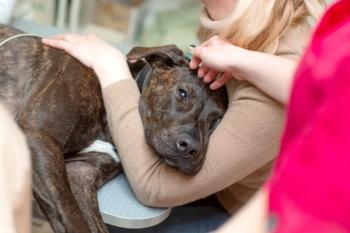The definition of glaucoma is changing rapidly as our understanding of the pathogenesis of damage to the retina and optic nerve improves. However, the disease can still be described generally as an elevation in intraocular pressure (IOP) that is incompatible with normal ocular function. IOP is the result of a balance between production and drainage of aqueous humor. In clinical practice, glaucoma is caused by drainage disturbances, while cases of increased production are not recognized.
Production and drainage of aqueous humor
Aqueous humor is transparent fluid produced in the ciliary processes, from where it flows into the posterior chamber and through the pupil into the anterior chamber. After circulating in the anterior chamber and supplying the metabolic requirements of the lens and cornea, this fluid exits the eye through the iridocorneal angle (between the cornea and iris), which is spanned by pectinate ligaments. The drainage continues through the uveal and corneoscleral meshworks, eventually exiting the eye into the systemic venous circulation.
Aqueous humor may also exit the eye through an unconventional path, in which it diffuses through the iris and ciliary body (or through the vitreous) into the suprachoroidal space; from there, the fluid drains into the venous circulation. The importance of this route varies among species, accounting for 15% of the total drainage in dogs and 33% in horses, but only 3% in humans.
Classifying glaucoma
Glaucoma may be classified in one of two ways:
- Based on the cause, it can be classified as primary, where outflow problems are linked to genetic abnormalities in the drainage pathway, or secondary, where another ocular disease (e.g. lens luxation, uveitis) decreases outflow.
- Alternatively, glaucoma can be classified according to the state of the drainage angle. The angle may be open (in which case the obstruction is further downstream), narrow or closed.
These classifications are not mere semantics; rather, they have significant clinical implications. It is possible that secondary glaucoma may be cured if the primary ocular disease is treated successfully (e.g. surgical removal of a luxated lens). More important, if unilateral glaucoma is deemed secondary, it means the contralateral eye is not necessarily at risk.
On the other hand, dogs with primary glaucoma will require lifelong treatment. Moreover, in patients presenting with unilateral primary glaucoma, the contralateral eye is highly likely to develop the disease (on average within 8 months). In some breeds, examination of the angle will help determine whether the eye is at risk for developing primary glaucoma.
The two classification methods complement each other; in dogs, it is possible to encounter any of the possible glaucoma combinations: primary open angle, primary narrow angle, primary closed angle, secondary open angle and secondary closed angle glaucoma.
Primary glaucoma is extremely rare in cats, and for all practical purposes feline glaucoma is invariably a secondary disease.
Primary open angle glaucoma
Primary open angle glaucoma (POAG) is an inherited disease that has been investigated extensively in beagles, in which it was shown to be an autosomal recessive disorder. However, POAG has also been documented in keeshonds, Norwegian elkhounds, poodles and other breeds, although the mode of inheritance has not been established in these breeds.
As the name implies, the angle and pectinate ligaments in dogs with POAG are normal. It is assumed that the outflow obstruction, located in the uveal and corneoscleral meshworks, is the result of biochemical changes to the basement membrane in these regions. The disease is chronic in nature, with IOP increasing slowly over many months or years. Although the dog may present with buphthalmos or even with secondary lens luxation, vision frequently is retained in advanced stages of this disease.
Primary narrow and closed angle glaucoma (goniodysgenesis)
Primary narrow angle glaucoma is an inherited disease in American and English cocker spaniels; flat-coated, Labrador and golden retriever breeds; as well as basset hounds, Samoyeds, chow chows, Great Danes, Siberian huskies and others. A developmental abnormality results in the formation of dysplastic pectinate ligaments, which can be seen as sheets of tissue spanning the drainage angle.
During the first years of life, aqueous humor exits the eye through flow holes in the sheets, but eventually the flow holes fail to control aqueous fluid outflow adequately, resulting in elevation in the IOP. Most canine patients present with an acute attack of glaucoma, including congestion, edema, fixed dilated pupils and loss of sight. Although only one eye may be affected initially, both eyes should be evaluated and prophylactic treatment of the unaffected eye is advisable. Individual attacks in affected eyes may be treated successfully, but progressive angle narrowing and closure may develop. In these patients, the long-term prognosis for vision is extremely guarded.
Secondary glaucoma
In patients with secondary glaucoma, pressure rises from obstruction of aqueous humor outflow caused by another ocular disease, most commonly one of the following:
- Lens luxation. Because the lens serves as a barrier against forward movement of vitreous, any lens luxation (whether anterior or posterior) may allow vitreous humor to move into the anterior chamber and obstruct outflow (Figure 1). If the lens luxation is anterior, fluid outflow will be further impeded by the physical presence of the lens in the anterior chamber.





